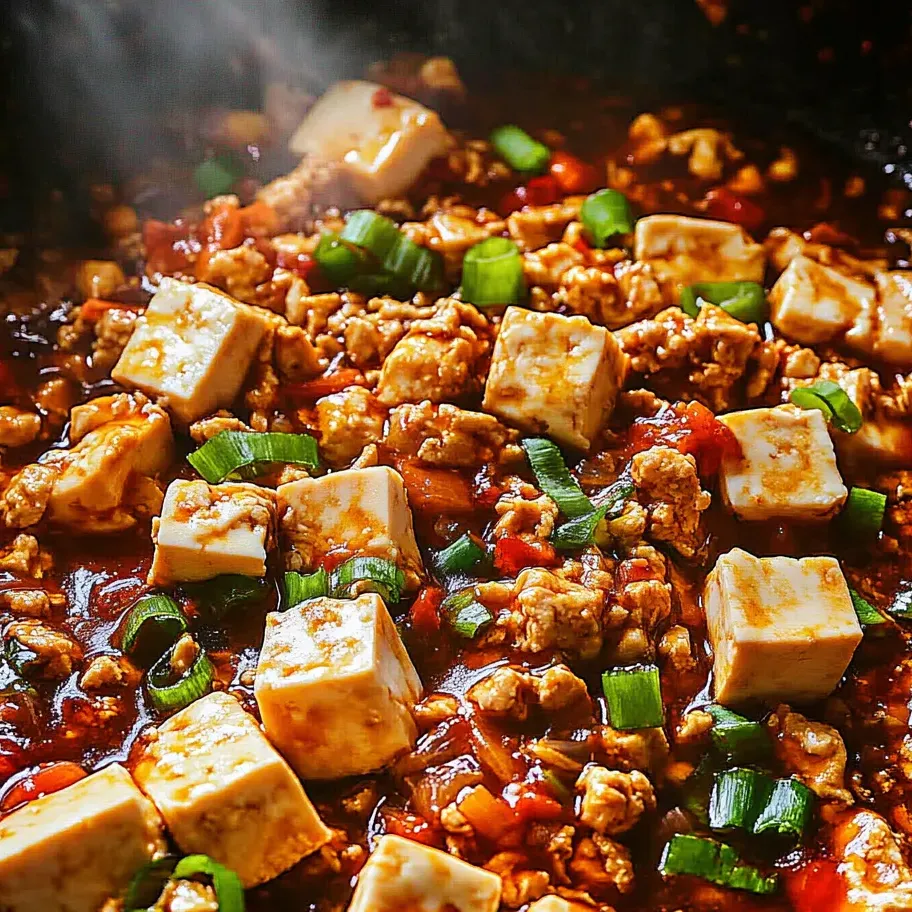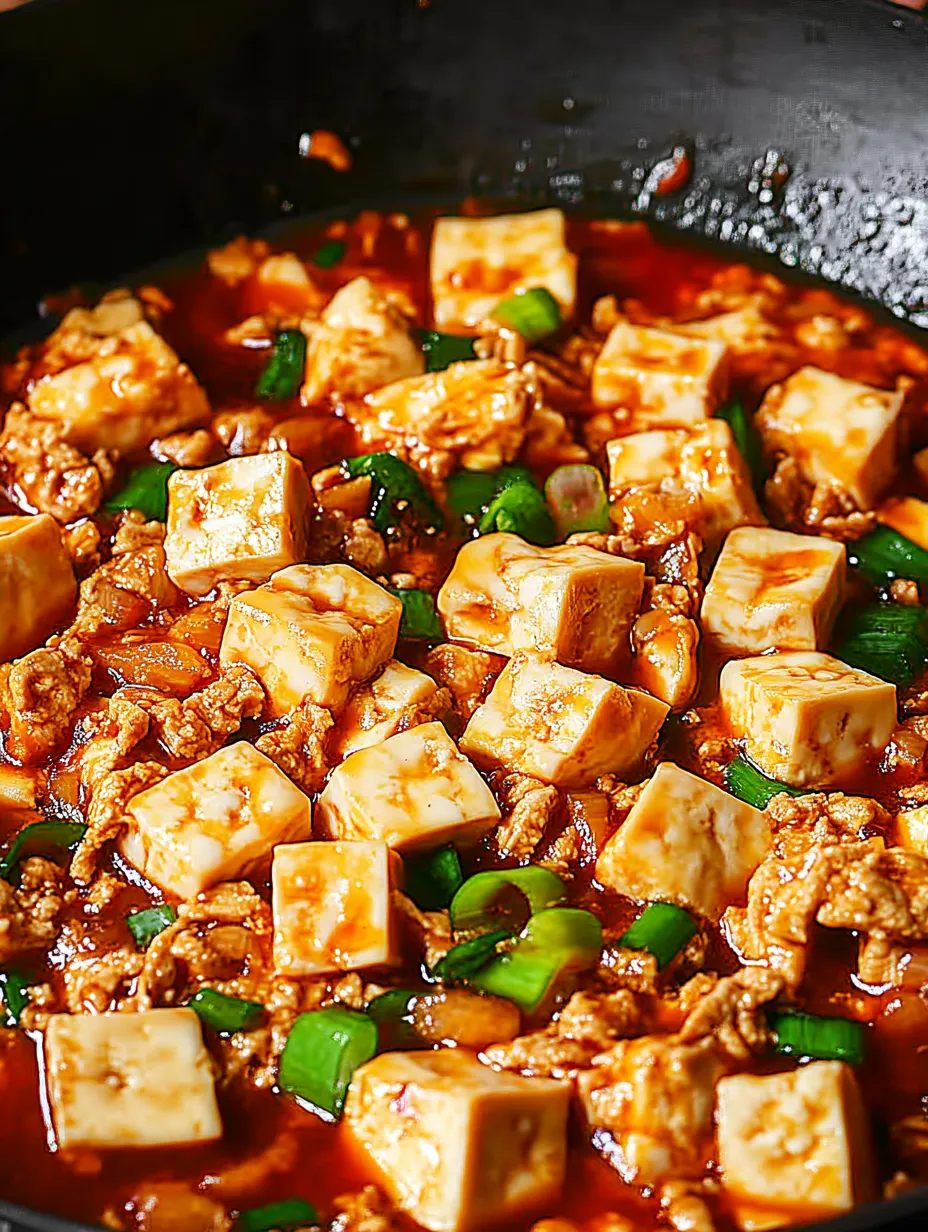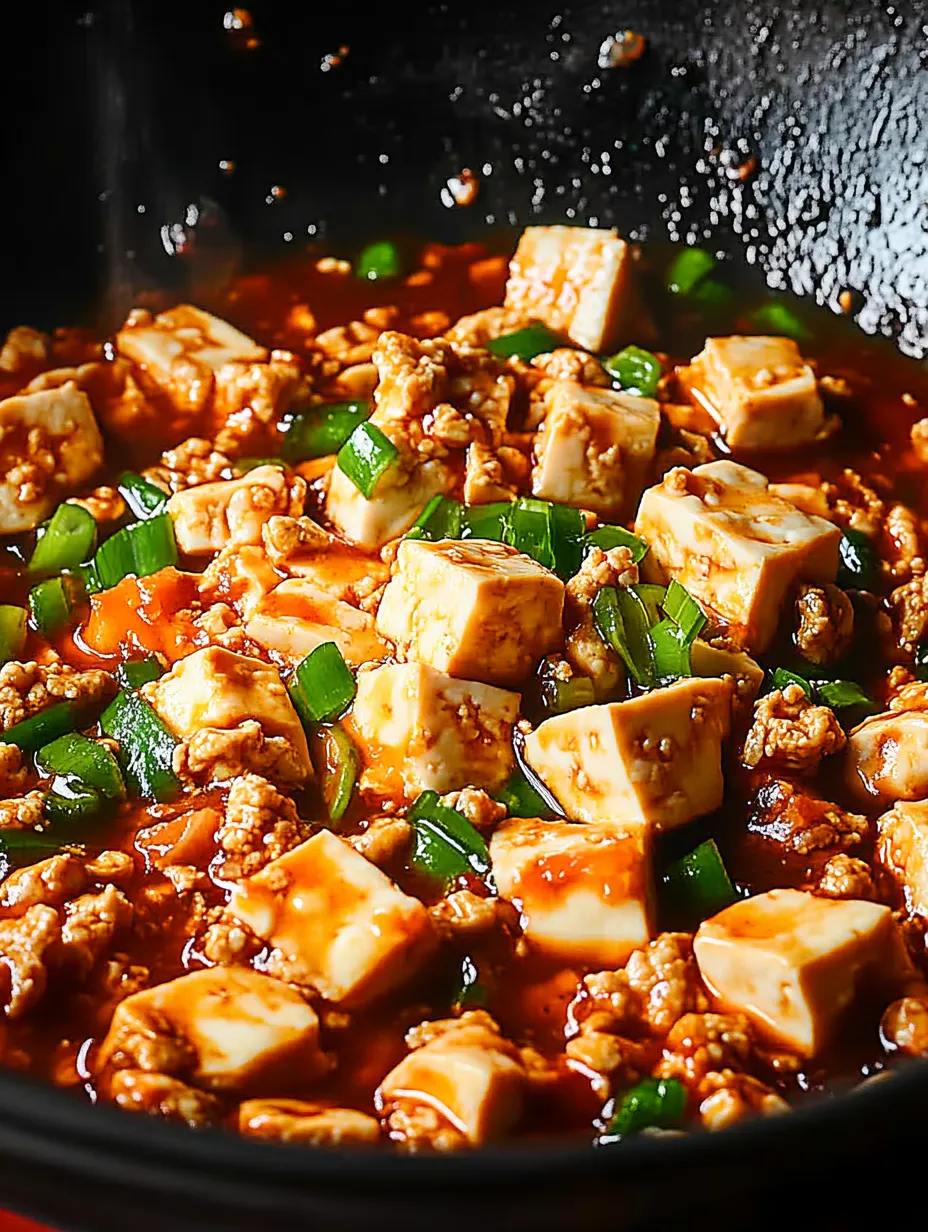 Pin it
Pin it
This robust Mapo Tofu dish brings genuine Sichuan tastes to your table in only 20 minutes. The smooth tofu chunks soaked in a fiery, rich sauce with aromatic ground pork create a wonderful mix that's made this meal loved worldwide.
I first threw this together one soggy night when I needed something warm and comforting. The mix of soft tofu and punchy sauce was so good it's now my favorite quick dinner when I want something that wows without keeping me cooking all evening.
Ingredients
- Silken tofu: gives that tender feel that soaks up all the sauce flavors
- Ground pork: brings a meaty punch – grab some with a bit of fat for better taste
- Doubanjiang: this spicy bean paste is what makes true Sichuan flavor happen
- Sichuan peppercorn: brings that funny tingly feeling your mouth gets with real Mapo Tofu
- Chicken stock: makes the sauce richer – homemade rocks but store bought is fine too
- Cornstarch: helps make that smooth, clingy sauce that coats everything nicely
- Sesame oil: adds that finish of nutty goodness – go for the toasted kind if you can
Easy Cooking Steps
- Mix Your Thickener:
- Stir cornstarch and cold water in a small cup until it's totally smooth. This mix will make your sauce nice and thick so it sticks to the tofu. Always use cold water or you'll get lumps.
- Get Your Tofu Ready:
- Cut the tofu into 1inch chunks with a sharp knife and gentle hands. Don't smush the soft tofu. A quick dip in hot salty water helps firm it up a bit while keeping it soft inside.
- Brown Your Meat:
- Cook the pork in hot oil until there's no more water coming out. This step really builds flavor. Break up any big lumps so everything cooks the same and feels nice in your mouth.
- Add Flavor Builders:
- Toss in garlic, ginger and the white parts of green onions to your meat and stir for half a minute until you can smell them. These give the sauce its base taste. Watch they don't burn or they'll taste bitter.
- Make Your Sauce:
- Put in the bean paste, soy sauce and other spices to build up the flavor. Cook them briefly to get their oils flowing before adding any liquid. Your sauce should look deep red and shiny.
- Put It All Together:
- Gently scoop the tofu into your sauce instead of stirring hard. Use a lifting motion to keep the tofu from breaking. Cook just briefly so the tofu doesn't fall apart.
 Pin it
Pin it
That doubanjiang really is the heart of this meal. I tried making Mapo Tofu without it once and it wasn't the same at all. After my trip to Sichuan a few years back, I found out that aged bean paste gives the dish its special color and richness that you can't get from anything else.
Picking Your Tofu
Most folks use silken tofu for that melt-in-your-mouth feel in Mapo Tofu. But if you want something firmer, medium tofu works fine too. The main difference? Silken needs gentle handling but soaks up more flavor, while medium keeps its shape better but doesn't drink in quite as much sauce. Just make sure your tofu smells fresh and doesn't have lots of water or yellow spots.
Getting The Spice Right
Real Mapo Tofu should make your mouth feel both hot and tingly in a way that grows as you eat. If you're new to Sichuan food, go easy on the bean paste and peppercorns at first – you can always add more next time as you get used to it. What's great about cooking this at home is finding exactly how hot you like it. Some Sichuan places let you pick your heat level, and now you can do that in your kitchen too.
 Pin it
Pin it
What To Serve With It
Most people eat Mapo Tofu with plain white rice, which helps balance out the strong flavors. For a full meal, add some green veggies like bok choy or Chinese broccoli. The crisp greens and spicy tofu make a great combo on your plate. Some folks like having pickled veggies on the side to clean your taste buds between bites of the rich, spicy main dish.
Keeping Leftovers
Mapo Tofu actually tastes even better the next day after the tofu sits and drinks up more sauce flavor. Keep what's left in a sealed container for up to 3 days. When you warm it up, add a splash of water or broth to thin the sauce and heat it slowly on medium-low. Don't let it boil hard or the tofu might fall apart. The sauce will get pretty thick in the fridge from the cornstarch, but it'll loosen up when you heat it again.
Frequently Asked Questions
- → What’s a good replacement for doubanjiang?
If you can’t find doubanjiang, gochujang with soy sauce or a mix of miso and chili paste works fine. These won’t match exactly, but offer similar spice and savory notes. Adjust amounts as gochujang’s sweetness can vary.
- → How do I make it vegetarian?
No pork? No problem! Swap it with crumbled tofu, tempeh, or a meat substitute. Use veggie broth in place of chicken stock, and leave out chicken bouillon. A bit of mushroom powder or extra soy sauce can help boost the savory taste.
- → Why does my tofu break apart?
Silken tofu is super delicate. Be careful when cutting and cooking. Briefly warm it instead of fully cooking before adding to the sauce. Use a spatula to fold gently instead of strong stirring. Want a sturdier tofu? Try medium firmness.
- → How spicy is it, and can I tone it down?
This dish has a moderate kick. Dial it down by using just 1 tablespoon of doubanjiang. Crank it up with 2 tablespoons if you’re into heat! Adjust chili oil to your liking. The Sichuan peppercorns tingle, not burn—skip them if that’s not your thing.
- → How should I store leftovers?
Pop any leftovers in an airtight container and keep in the fridge for up to 3 days. Warm it back up slowly on the stovetop, adding a splash of water if it’s too thick. Avoid microwaving—it could mess with the tofu’s texture.
- → Should I make it all ahead of time?
You can prep the sauce and meat ahead, but toss in the tofu just before eating. The sauce keeps for 2-3 days in the fridge. When needed, reheat the sauce, prep fresh tofu, and mix together to keep that silky texture perfect.
